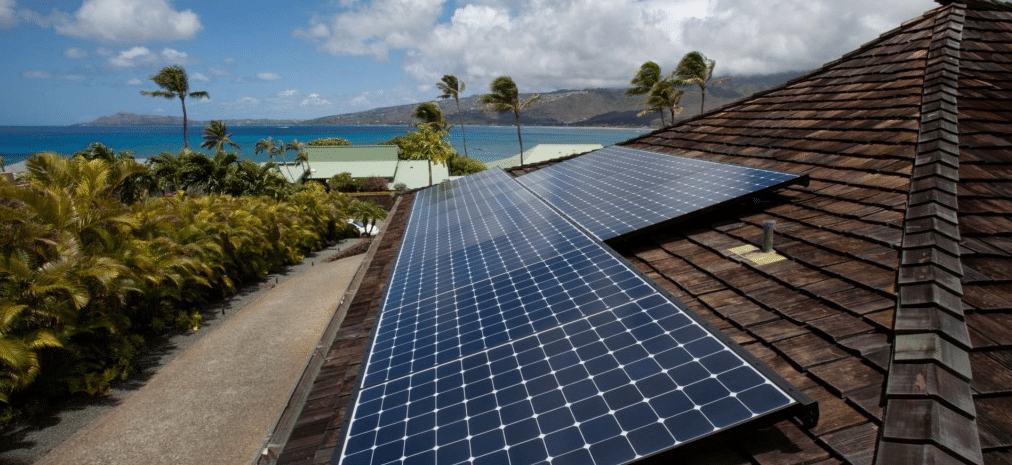“There they go! I must run and catch up with them because I am their leader!” is an apocryphal quote attributed to Gandhi and others. If one substitutes “regulator” for leader, that is the sense of many agencies which are trying to keep up with the rapid change in technology and economics for renewable energy – or at least the ones who are making the effort.
However, in the case of Hawaii, it’s been the regulators who are leading to get the state to 100% renewable electricity. In 2014, the Hawaii Public Utilities Commission (HPUC) issued their “Commission’s Inclination on the Future of Hawai’i’s Electric Utilities”, criticizing state utilities for lack of a cohesive road map to attain 100% renewable energy electricity generation. The report noted that instead steps toward renewable energy were proposed and achieved in a relatively uncoordinated fashion, leading to goal shortfalls and negative outcomes, such as a surge of behind-the-meter solar installations without infrastructure backup. Moreover, most of the utility efforts were focused on relative incremental improvement of conventional power rather than a transition away from fossil fuels. Added to that was a drawn out and ultimately unsuccessful acquisition of Hawaiian Electric Companies (HECO) by NextEra Energy.
After these “false starts”, HECO issued a Power Supply Improvement Plan (PSIP) in December 2016 that put forth an ambitious five year plan to double Hawaii’s renewable energy penetration from 25% to 52% in 2021, and also nearly double the state’s photovoltaic installations from 717 MW to 1,465 MW in the same time period. This PSIP is expected to put Hawaii on the road to get 100% of its electricity by 2040 from renewable sources, with no fossil fuel assets on the islands by 2045.
This PSIP was approved to go forward by HPUC on July 14, 2017.
The additional solar assets include 360 MW of grid-scale solar, 326 MW rooftop, plus 31 MW under a feed in tariff. In addition are 157 MW of wind power and 115 MW of Demand Response programs. Moloka’i is planned to be the first island to go 100% renewable electricity, by 2020. The PSIP also lays out strategies and goals for energy storage, transmission upgrades and continual feedback from communities and the regulators. Rate structures would be adjusted to accommodate renewable energy, including time-of-use or other rates to accommodate the expected transition to electric vehicles.
As with many aspirational plans, the devil will be in the details, and issues were raised by both HPUC and various advocates. One concern was whether there was a “rush” to install PV and wind power due to the impending phase out and end of the federal tax credits. Consumer advocates were worried about a potential increase in electricity rates, already among the highest in the United States, due the increase in renewable energy resources – although no alternative was given of what rate increases would be under a business as usual scenario. One of the biggest issues raised was the mix of supporting technologies for the large influx of renewables. Specifics were lacking in the consideration of battery energy storage systems versus pumped storage hydro, the two main energy storage technologies under consideration.
Energy storage is a particularly thorny issue for the behind-the-meter segment. While the current successor policy to net metering in Hawaii effectively mandates energy storage, installers and residents are complaining of delays in the permitting process for customer-sited battery systems.
There was also concern regarding the build out of transmission infrastructure, whether inside or between islands, against consideration of load shedding and other options. And while HECO’s plan provides for a strategic exit from the conventional power business, there was opposition to the utilities going ahead with new conventional power plants on military bases.
As the plan moves forward, HPUC will be reviewing progress on an annual or more frequent basis as needed.
This content is protected by copyright and may not be reused. If you want to cooperate with us and would like to reuse some of our content, please contact: editors@pv-magazine.com.








By submitting this form you agree to pv magazine using your data for the purposes of publishing your comment.
Your personal data will only be disclosed or otherwise transmitted to third parties for the purposes of spam filtering or if this is necessary for technical maintenance of the website. Any other transfer to third parties will not take place unless this is justified on the basis of applicable data protection regulations or if pv magazine is legally obliged to do so.
You may revoke this consent at any time with effect for the future, in which case your personal data will be deleted immediately. Otherwise, your data will be deleted if pv magazine has processed your request or the purpose of data storage is fulfilled.
Further information on data privacy can be found in our Data Protection Policy.